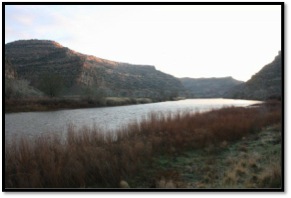Microbes from Phylum Chloroflexi Provide Clues to Carbon Cycling, Respiration in Sediments
The Science
Through metagenomics, researchers sequenced 86 organisms from the phylum Chloroflexi that represent 15 distinct lineages in order to discover the secrets of microbial life within terrestrial aquifer sediment deposits.
The Impact
These Chloroflexi microbes were found to have metabolic processes involved in plant mass degradation, which could be useful for the production of biofuels, as well as the subsurface nitrogen and carbon cycles.
Summary

Sediment from an aquifer near the Colorado River was sampled to reveal the community
composition of microbes. It was determined that Chloroflexi, a relatively unknown phylum,
made up a significant proportion of this sediment.
Through previous research, it is known that microorganisms in aquifer sediments are responsible for subterranean carbon turnover as well as degrading organic contaminants. For this reason, these microorganisms can heavily impact the quality of underground drinking water. In earlier studies, it was determined that bacteria of the phylum Chloroflexi are responsible for a substantial amount of the microbial population in sediments. However, these microbes are poorly understood, as only six of about 30 Chloroflexi classes have been sequenced. For this reason, a team of researchers including scientists from the DOE Joint Genome Institute conducted a study on the microbial composition of these aquifer sediments to gain a broader knowledge of the metabolic characteristics of Chloroflexi.
In a study published August 5, 2013 in Microbiome, researchers were able to reconstruct three near-complete, Chloroflexi genomes from the metagenomic data collected at the Integrated Field-Scale Subsurface Research Challenge Site (IFRC) in Colorado as part of a DOE JGI Community Sequencing Program project led by collaborator Jill Banfield of UC Berkeley. Metabolic analyses revealed that Chloroflexi can break down plant mass, play roles in subsurface carbon and nitrogen cycles, and can adapt to changing oxygen levels. These traits, the researchers noted, were likely to apply to Chloroflexi in other sediment environments.
Contact
Jillian F. Banfield
[email protected]
Funding
DOE Office of Science, Office of Biological and Environmental Research
Integrated Field Research Challenge
Subsurface Biogeochemical Research Program
Publication
Hug LA et al. “Community genomic analyses constrain the distribution of metabolic traits across the Chloroflexi phylum and indicate roles in sediment carbon cycling.” Microbiome. Vol. 1(22) 2013. doi:10.1186/2049-2618-1-22